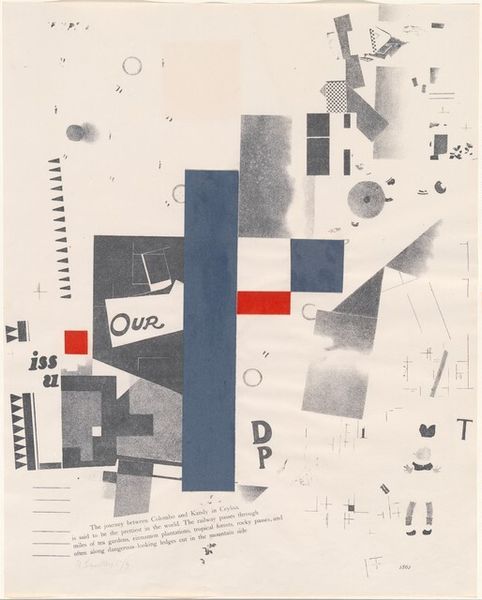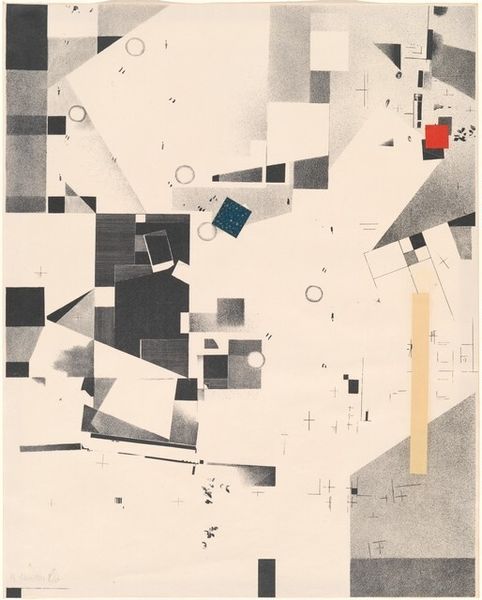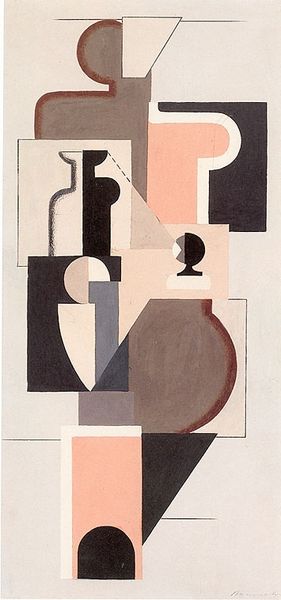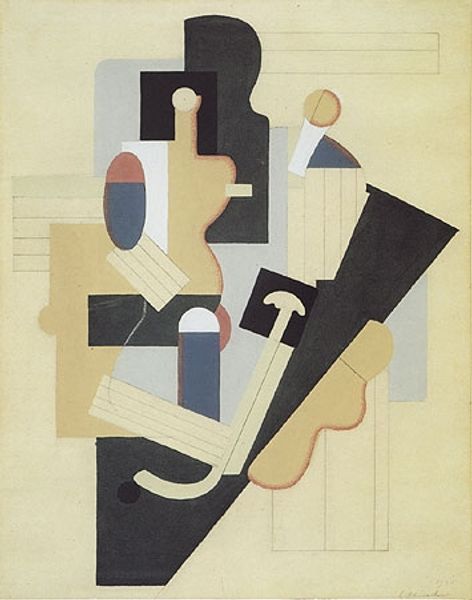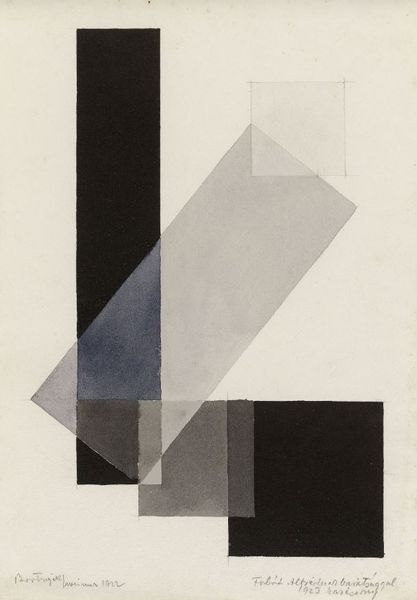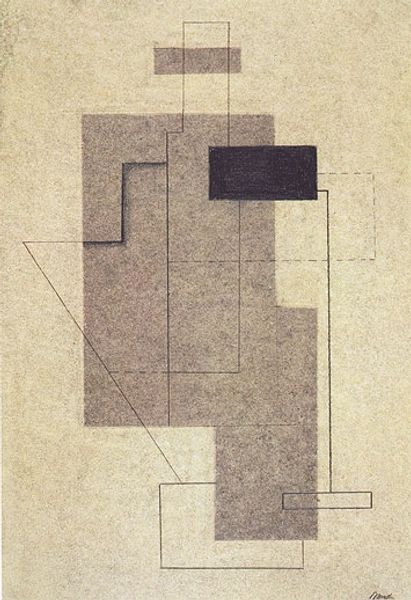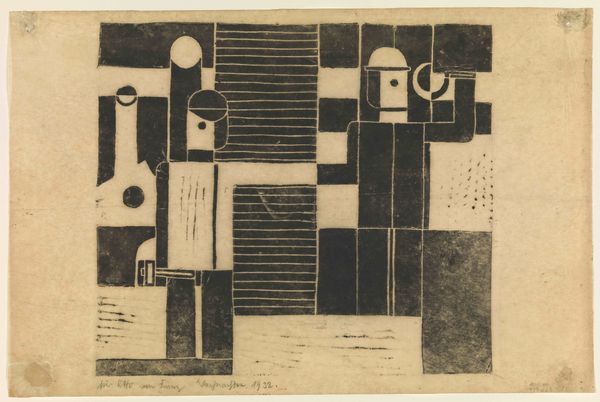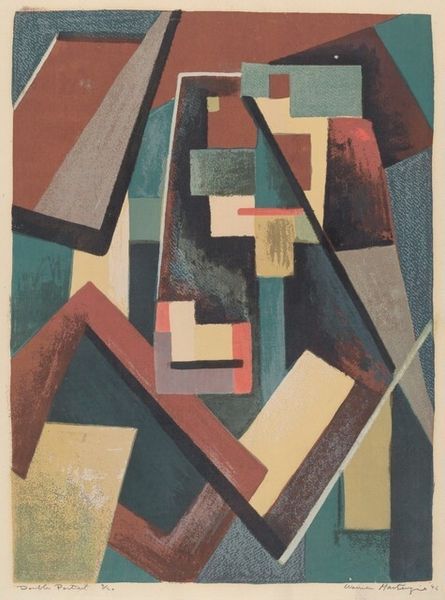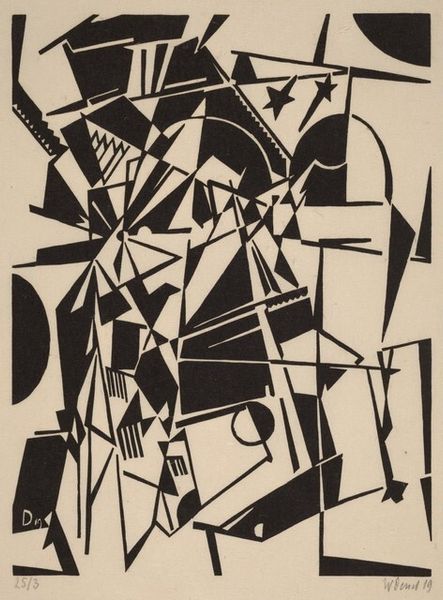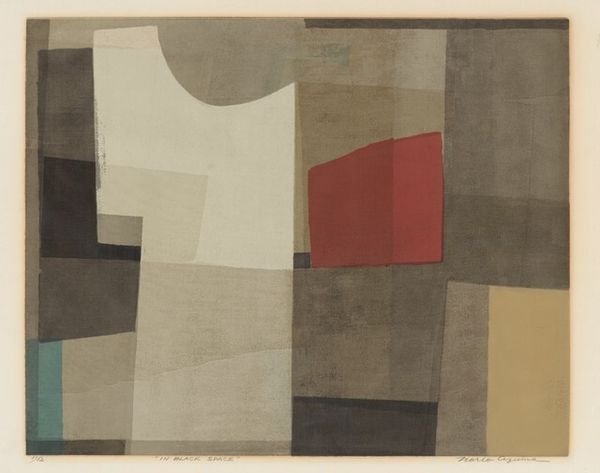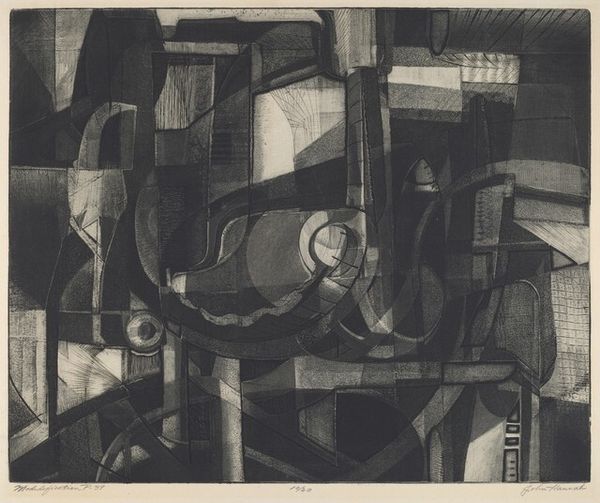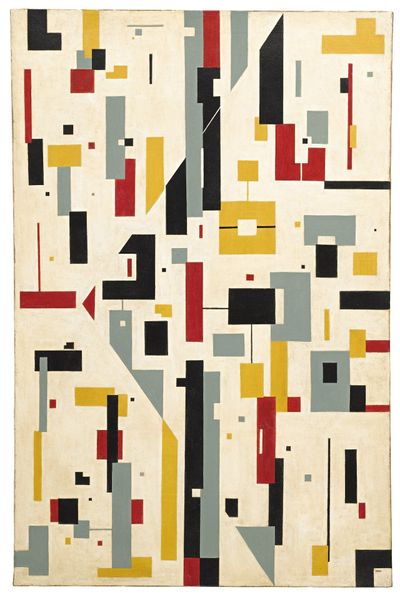
Dimensions: sheet: 55.4 x 44.4 cm (21 13/16 x 17 1/2 in.)
Copyright: National Gallery of Art: CC0 1.0
Curator: Kurt Schwitters' "Untitled from Merz 3," created in 1923, strikes me immediately as an assertive example of Constructivist sensibilities rendered through collage and print. Its geometry feels so stridently urban. Editor: My eye is drawn to the seemingly haphazard, yet rigidly structured arrangement of geometric forms. The contrasting textures and densities – the checkerboards versus the solid blocks – create a sense of depth and dynamism. Is there a key, some symbolic Rosetta stone to help unlock its message? Curator: In the wake of World War I, and amidst the economic hardship of Weimar Germany, Schwitters, disillusioned with the established order, embraced Dada's anti-art ethos but with a unique twist. Merz, his personal artistic project, sought to create a total work of art from the debris of everyday life and materials found during and after the War, but as a nonpolitical position. This "Untitled" piece emerges from that period of profound social upheaval. Editor: The fragments do feel like relics, almost archeological. But rather than conveying a clear narrative, they evoke the feeling of a city – of urban life fragmented, with glimpses of figures, printed matter, architectural elements. The "ex" and "M"—do those snippets represent specific places or ideas up for examination? Are they clues to his state of mind? Curator: It is fascinating that, after WW1, the Constructivist language gave permission to the artist for social reform using geometric visual systems, that promoted ideals, like utopian progress. But in the Merz collages of Kurt Schwitters these symbols serve a more fragmented representation, without aspiring to create any better new worlds. He shows the chaotic face of modernity itself, with this new order through dissonance. Editor: So, rather than imposing order, Schwitters reflects chaos through an aesthetic order. The psychological impact is striking. He has taken the cold geometry that once stood for an idea of new future to dismantle it, reassembling it in a way that expresses anxiety, and all of the post-war period, of course. It’s a puzzle of the collective subconscious. Curator: Precisely, there are some visual paradoxes with lines pointing nowhere. As Walter Benjamin observed, art in this era grappled with the "shock experience" of modernity. I feel that it may capture that disorienting effect and also point the responsibility to new visual culture, to make people experience the new social era that it brought along, or, at least to have their experience documented and represented in galleries or museums like ours. Editor: A vital, if fractured, mirror of its time. Its echoes linger powerfully in our own era of fragmentation. Thank you for making see the real world beyond it's pieces.
Comments
No comments
Be the first to comment and join the conversation on the ultimate creative platform.
